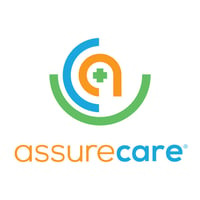
Utilization Management
Verify eligibility, optimize reviews, and streamline appeals and grievances.

Utilization Management
Verify eligibility, optimize reviews, and streamline appeals and grievances.

Care Management
Enable preventative care, manage medical interventions, and efficiently report on program outcomes.

Medication Management
Perform and bill medical services, ensure medications are safe and effective, and identify ways to improve care.

Quality Management
Improve outcomes, lower costs, and adhere to standards, such as HEDIS, Stars, and PQA.

Specialty Pharmacy

Physician credentialing is a crucial, but often overlooked, aspect of the healthcare sector. It is essential to maintain accurate and up-to-date physician information to ensure that patients receive quality care. Mistakes during the physician credentialing process can have serious consequences, such as financial losses, delays in claim reimbursements, fines or penalties, exclusion from federally funded programs, and even harm to patients. Credentialing lapses can also expose a healthcare organization to malpractice suits and accreditation problems. Therefore, understanding the depth of the credentialing process and avoiding common mistakes is vital knowledge.
What is physician credentialing?
Physician credentialing, also known as medical or provider credentialing, is the process that validates physicians for delivering clinical care, wherein physician’s education, license, experience, certifications, affiliations, malpractice, any adverse clinical occurrences, and training are verified. It also involves conducting background checks and checking for any disciplinary actions against the physician. The physician credentialing process is important for both the physician and the healthcare organization, as it establishes trust between patients and physicians and ensures that only qualified physicians are providing care.
Who conducts physician credentialing?
In the United States, physician credentialing is typically done by various physician credentialing boards or organizations, both government and private, that establish these guidelines and physician credentialing criteria. For example, The Centers for Medicare and Medicaid Services (CMS) is a government organization that physician credentialing must adhere to in order to receive Medicare reimbursement. Similarly, The National Committee for Quality Assurance (NCQA) is a private physician credentialing organization that provides physician credentialing services to managed care organizations.
What is the typical timeframe for the physician credentialing process?
The physician credentialing process usually takes anywhere from 45 to 60 days, however, there is no defined time frame. It may take more or less time depending on the physician’s qualifications and the type of organization they are applying to.
What are some common physician credentialing mistakes made by physicians?
What are the common physician credentialing mistakes made by healthcare organizations?
Physician credentialing is an important process that should not be taken lightly. By understanding the importance of credentialing and avoiding common mistakes, you can help ensure that your practice or your organization runs smoothly and in compliance with all credentialing rules.
iPatientCare is one of the leading EHR vendors in the market & offers comprehensive Healthcare Technology Solutions designed to meet the needs of practices of all sizes. Our subject experts are always available to answer all your queries about the physician credentialing process to help you not make any mistakes.
Contact our subject experts to learn more about medical provider credentialing.

AssureCare
AssureCare® is a leading provider of integrated population care management software for healthcare and human services organizations. For nearly two decades, AssureCare has served the healthcare industry.


Koen Brown
April 25, 2022

Stay in the know
The latest healthcare insights. Straight from our experts to your inbox.